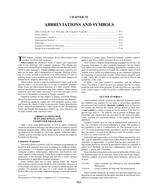Presents a comparison of measured air flows in a detached house with the results of a simulation model. The house was built mainly for experimental purposes and therefore allows very detailed measurements of the interior and the outside microclimate (e.g., wind velocity, air temperature, humidity, etc.). The air permeability of the house was characterised by means of a pressurisation technique. Ventilation measurements were carried out using the tracer gas technique (decay method with two gases, SF6 and N2O. A mobile, multizone, multitracer apparatus, designed and built by the authors was used. The measured data were analysed using the inverse problem technique in order to calculate the time histories of the air flow rates during the measurement period and their uncertainties. The building envelope air-leakage coefficients and meteorological data were used in COMIS to obtain the simulated air flow rates. The comparison with measured air flows allows one to define the application limits of the model discussed.
KEYWORDS: year 1995, detached buildings, housing, experiment, ventilation, comparing, measuring, air flow rate, air flow, computer programs, microclimate, air permeability, tracers, gas, sulphur hexafluoride, nitrous oxide, calculating, history, air infiltration, meteorology, data
Citation: Symposium, ASHRAE Trans. 1995, Vol.101, Part 1, Paper number CH-95-1-1, 525-527
Product Details
- Published:
- 1995
- File Size:
- 1 file , 930 KB
- Product Code(s):
- D-17226


